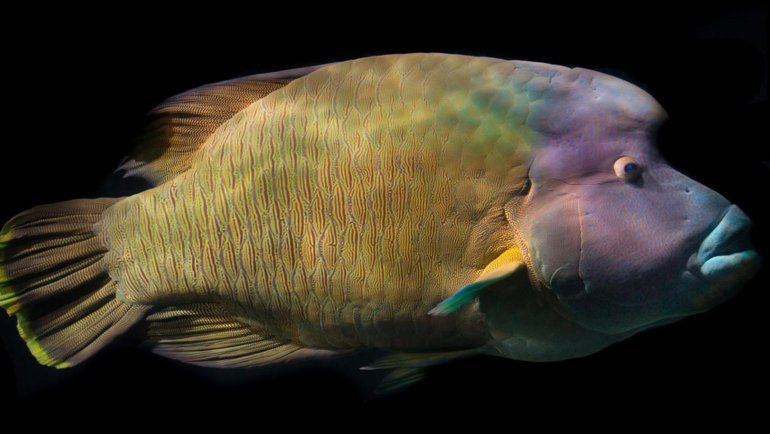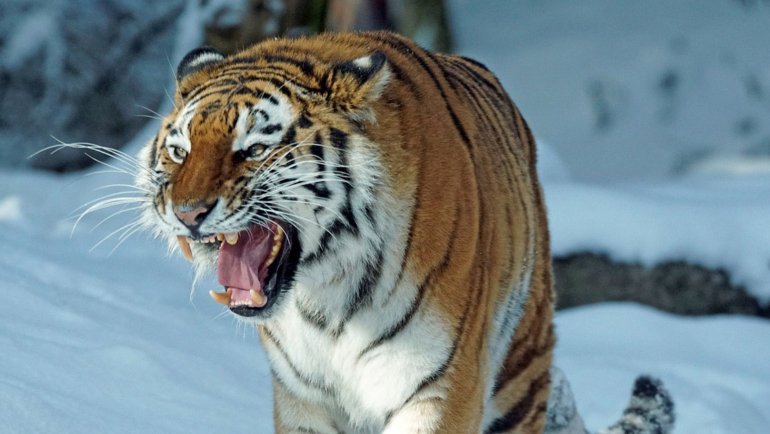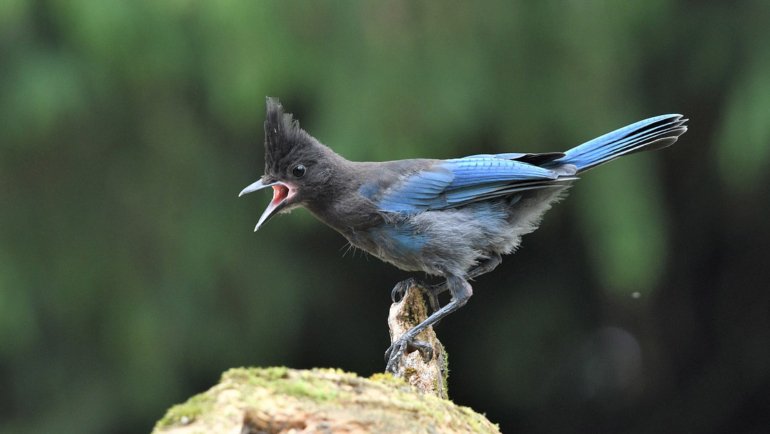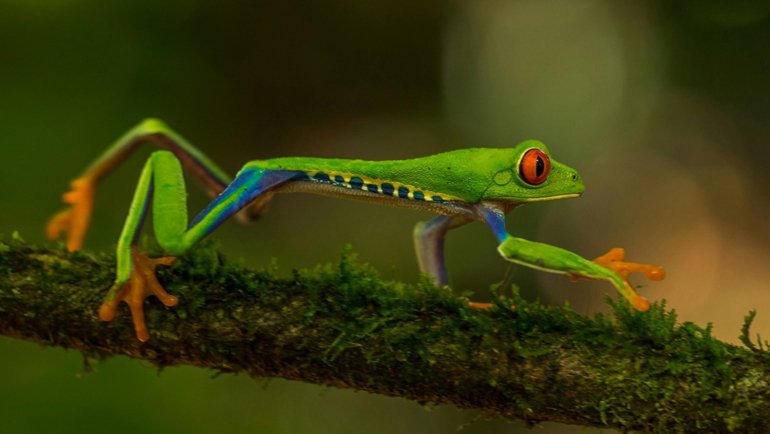The animal kingdom is full of fascinating creatures, each with its own unique adaptations for survival. One of the most impressive and awe-inspiring adaptations is bite force. Measured in pounds per square inch (psi), bite force can tell us a lot about an animal’s diet, hunting methods, and evolutionary history.
In this article, we will explore the top 10 animals with the strongest bites, showcasing the incredible diversity and power of nature.
10 Animals with the Strongest Bites
1. Saltwater Crocodile
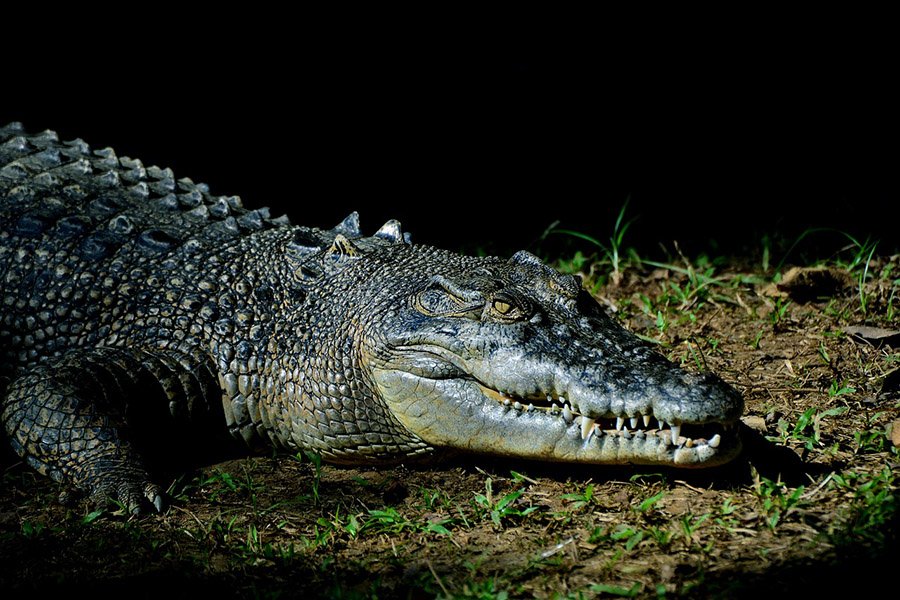
- Scientific name: Crocodylus porosus
- Type of animal: Reptile
- Conservation status: Least Concern
The saltwater crocodile, often referred to as the “saltie,” boasts the most powerful bite in the animal kingdom. With a bite force measured at an astonishing 3,700 psi, this apex predator dominates its habitat from the eastern coast of India to northern Australia. Saltwater crocodiles employ their formidable jaws to capture and crush their prey, which includes fish, birds, and even large mammals like water buffalo.
Did you know? Saltwater crocodiles have the strongest bite ever recorded, even surpassing that of the mighty Tyrannosaurus rex in terms of force!
2. Nile Crocodile

- Scientific name: Crocodylus niloticus
- Type of animal: Reptile
- Conservation status: Least Concern
The Nile crocodile is another fearsome reptilian predator with a powerful bite force of around 3,000 psi. Found throughout sub-Saharan Africa, this crocodile is known for its aggressive nature and impressive hunting skills. It preys on a variety of animals, including fish, birds, and mammals, often lying in wait near water sources to ambush unsuspecting prey.
Did you know? The Nile crocodile has a unique hunting technique known as the “death roll,” where it spins its body to tear apart its prey.
3. American Alligator

- Scientific name: Alligator mississippiensis
- Type of animal: Reptile
- Conservation status: Least Concern
The American alligator, native to the southeastern United States, possesses a bite force of approximately 2,980 psi. This formidable reptile thrives in freshwater environments such as swamps, rivers, and lakes. Its powerful jaws enable it to capture a wide range of prey, from fish and crustaceans to mammals and birds.
Did you know? American alligators have been known to use tools, such as placing sticks on their snouts to lure birds during nesting season.
4. Hippopotamus

- Scientific name: Hippopotamus amphibius
- Type of animal: Mammal
- Conservation status: Vulnerable
Despite its herbivorous diet, the hippopotamus has an incredibly strong bite force of around 1,800 psi. This massive mammal, found in sub-Saharan Africa, uses its powerful jaws primarily for defense and territorial disputes. Hippos are known for their aggressive behavior and can be extremely dangerous when provoked.
Did you know? Hippos can open their mouths up to 180 degrees, displaying their impressive tusks and teeth as a warning to potential threats.
5. Jaguar

- Scientific name: Panthera onca
- Type of animal: Mammal
- Conservation status: Near Threatened
The jaguar, the largest cat in the Americas, has a bite force of around 1,500 psi. This powerful predator inhabits rainforests, swamps, and grasslands, using its strong jaws to pierce the skulls of its prey. Jaguars are known for their ability to hunt a wide variety of animals, including deer, peccaries, and even caimans.
Did you know? Jaguars have the strongest bite force of any big cat, enabling them to crush the shells of turtles and tortoises with ease.
6. Bull Shark

- Scientific name: Carcharhinus leucas
- Type of animal: Fish
- Conservation status: Near Threatened
Bull sharks are notorious for their aggressive behavior and powerful bite force, measured at around 1,300 psi. Found in both saltwater and freshwater environments, these sharks are highly adaptable and can even venture far up rivers. Their diet includes fish, dolphins, and even other sharks.
Did you know? Bull sharks are one of the few shark species that can survive in freshwater for extended periods, making them capable of traveling far inland.
7. Gorilla
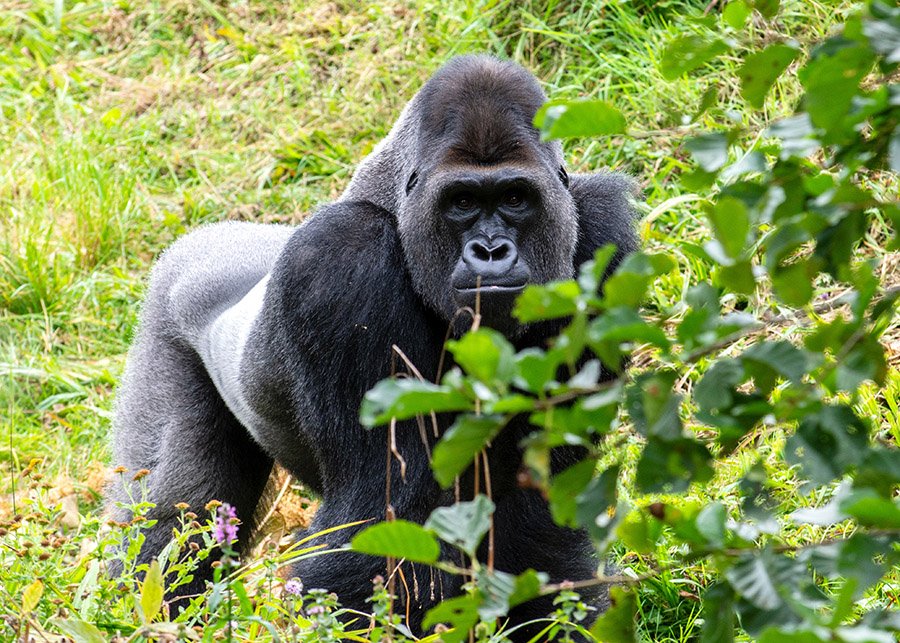
- Scientific name: Gorilla gorilla
- Type of animal: Mammal
- Conservation status: Endangered
The gorilla, our close relative, possesses a surprisingly strong bite force of about 1,300 psi. These gentle giants, native to the forests of central Africa, use their powerful jaws to crunch through tough vegetation, such as bamboo and fibrous plants. Gorillas are primarily herbivores but will occasionally consume insects.
Did you know? Gorillas have a bite force strong enough to crack open nuts, which is essential for their diet in the wild.
8. Polar Bear

- Scientific name: Ursus maritimus
- Type of animal: Mammal
- Conservation status: Vulnerable
Polar bears have a bite force of approximately 1,200 psi, which they use to capture and consume their primary prey, seals. These majestic mammals are well-adapted to the harsh Arctic environment, relying on their powerful jaws to break through thick layers of ice and access seal dens.
Did you know? Polar bears have black skin underneath their white fur, which helps them absorb and retain heat from the sun.
9. Spotted Hyena

- Scientific name: Crocuta crocuta
- Type of animal: Mammal
- Conservation status: Least Concern
The spotted hyena is renowned for its strong bite force, measuring around 1,100 psi. Found in sub-Saharan Africa, these social animals use their powerful jaws to crush bones and access the nutritious marrow inside. Spotted hyenas are skilled hunters and scavengers, often working in packs to take down large prey.
Did you know? The spotted hyena’s bite is strong enough to break through elephant bones, making it one of the most efficient scavengers in the animal kingdom.
10. Bengal Tiger
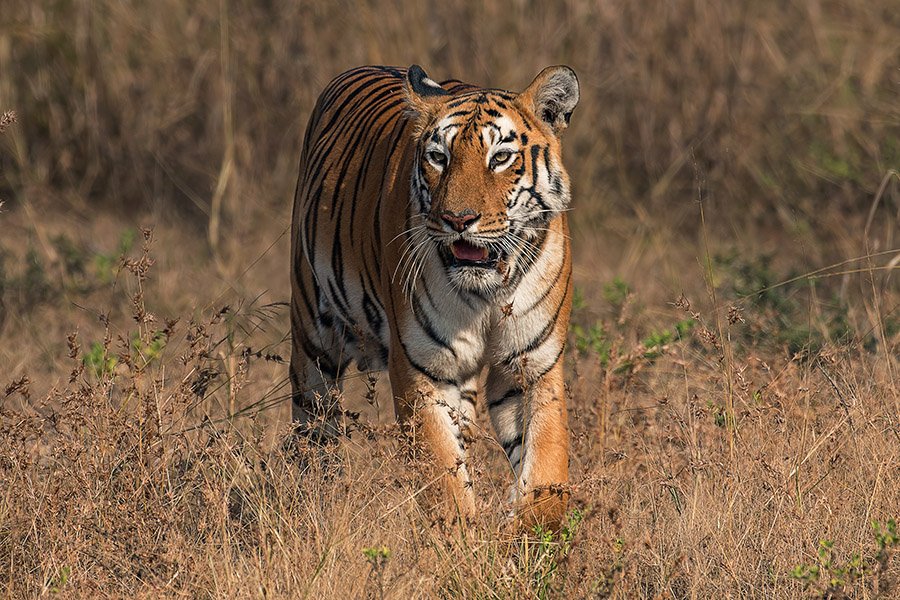
- Scientific name: Panthera tigris tigris
- Type of animal: Mammal
- Conservation status: Endangered
The Bengal tiger, a majestic predator from the forests and grasslands of India and Bangladesh, has a bite force of around 1,050 psi. This powerful big cat relies on its strong jaws to bring down prey such as deer, wild boar, and water buffalo. Bengal tigers are solitary hunters, using stealth and strength to ambush their targets.
Did you know? Bengal tigers have the largest canine teeth of any big cat, measuring up to 4 inches long!
How is Bite Force Measured in Animals?
Bite force is a fascinating aspect of animal physiology, but how exactly is it measured? Scientists use a combination of observational studies, biomechanical analysis, and sophisticated technology to accurately gauge the bite force of various animals.
First, researchers often observe the feeding behaviors of animals in the wild or in controlled environments. They use high-speed cameras and pressure-sensitive devices to capture and measure the force exerted during biting. These observations provide valuable data on how animals use their bite force in natural settings.
Second, biomechanical analysis plays a crucial role in understanding bite force. Scientists create detailed models of an animal’s skull and jaw, using computer simulations to estimate the mechanics of biting. This approach allows for precise calculations of bite force based on the animal’s anatomy and muscle structure.
Finally, advanced technology, such as force transducers and pressure sensors, is used to directly measure bite force in a controlled setting. These devices are often placed between an animal’s jaws to record the pressure exerted during biting. This method provides accurate, real-time data on bite force.
By combining these techniques, researchers can accurately measure and compare the bite forces of different animals, shedding light on the incredible adaptations that enable them to thrive in their environments.
